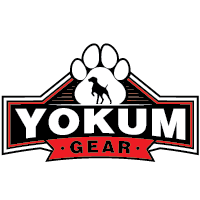Dogs are intelligent creatures that thrive on mental stimulation just as much as physical activity. For smart pups, traditional toys might not offer enough of a challenge. Enter dog puzzles — intricate toys and games designed to engage your dog's mind, provide hours of entertainment, and even offer some yummy rewards for their hard work. Whether you're trying to keep them busy while you’re at work, or you want to push their intelligence to new limits, challenging dog puzzles can be a perfect solution.
Why Are Dog Puzzles Important?
Dog puzzles are not just about keeping your canine companion occupied. They serve several critical roles in a dog's overall well-being:
- Mental Stimulation: Puzzles keep your dog’s brain active, helping to stave off boredom and related destructive behaviors.
- Problem-Solving: These toys teach dogs to think critically and solve problems, which can be useful for training purposes.
- Physical Exercise: Many puzzles require dogs to move around or manipulate parts, ensuring they get some physical activity too.
- Bonding: Engaging in puzzle play together can strengthen the bond between you and your dog.
Types of Dog Puzzles
Dog puzzles come in various shapes, sizes, and levels of difficulty. Here are some of the most popular types:
Treat-Dispensing Puzzles
These puzzles challenge your dog to manipulate the toy in specific ways to release treats. Popular options include:
- KONG Classic: A versatile toy that can be filled with treats or peanut butter, encouraging dogs to chew and lick to reach the rewards inside.
- Starmark Bob-A-Lot: This weighted toy rocks back and forth, dispensing treats as your dog paws and nuzzles it.
Interactive Game Boards
These puzzles often require more complex problem-solving skills. Dogs may need to slide, lift, or push pieces to uncover treats. Some top picks are:
- Nina Ottosson Dog Tornado: A rotating puzzle where dogs must spin levels to uncover hidden treats.
- TRIXIE Pet Products: A variety of interactive game boards with different moving parts and compartments to challenge your dog.
Hide and Seek Toys
Designed to mimic natural hunting behaviors, these toys let dogs use their instincts to find smaller toys hidden within a larger toy. Examples include:
- Outward Hound Hide-A-Squirrel Puzzle: A plush tree trunk filled with squeaky squirrels that dogs pull out with their snouts and paws.
- Snuffle Mats: Mats with numerous fabric strips where you can hide small treats, encouraging your dog to use their nose to sniff out the rewards.
Choosing the Right Puzzle for Your Dog
Not all puzzles are suitable for every dog, so consider the following factors when making your selection:
- Skill Level: Start with simpler puzzles to gauge your dog’s interest and skill level before progressing to more challenging ones.
- Durability: Ensure the puzzle is made from robust materials, especially if your dog is a heavy chewer.
- Safety: Avoid puzzles with small, detachable parts that can be swallowed or become choking hazards.
- Size: Choose a puzzle that is appropriate for your dog’s size. Smaller dogs might struggle with larger toys and vice versa.
Tips for Successful Puzzle Play
To make the most out of puzzle playtime, keep these tips in mind:
- Supervise Initially: Always supervise your dog when introducing a new puzzle to ensure they understand how it works and to monitor for any potential issues.
- Rotate Puzzles: To keep things fresh and challenging, rotate different puzzles to prevent your dog from getting bored with the same one.
- Positive Reinforcement: Reward your dog with praise and treats when they successfully solve the puzzle to encourage continued engagement and learning.
Incorporating challenging dog puzzles into your pet's routine can provide endless benefits and improve their quality of life. By selecting the right puzzles and offering consistent encouragement, you can help your smart pup reach their full potential while ensuring they stay mentally and physically stimulated.

